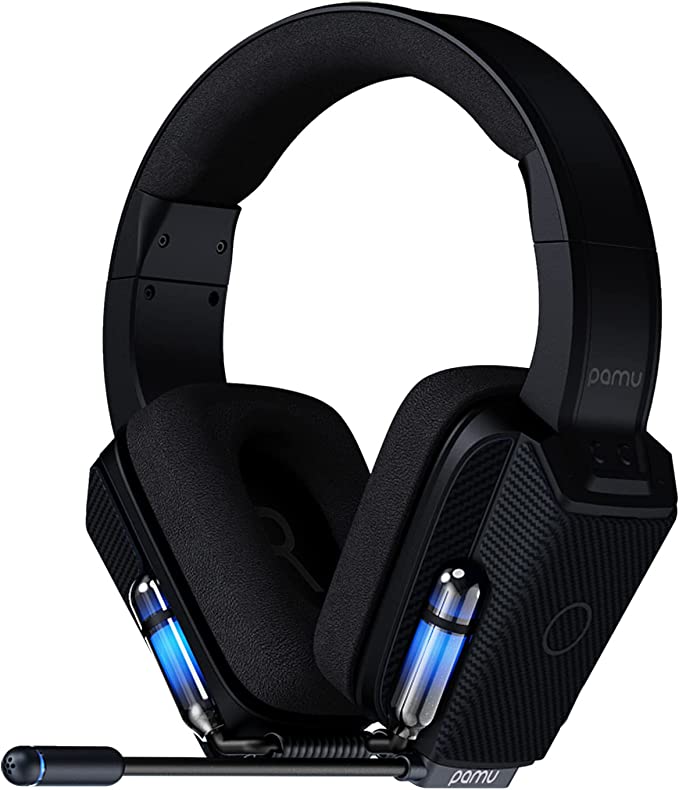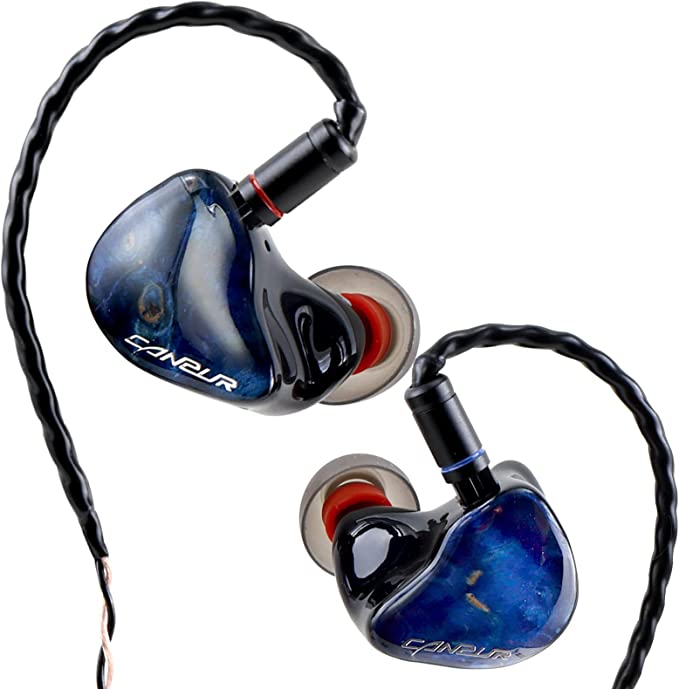Phenyx Pro PTU-4000-8H: 8-Channel UHF Wireless Microphone System for Uninterrupted Performance
Update on July 25, 2025, 8:21 a.m.
From the crackle of early radio waves to the seamless clarity of today’s wireless microphones, the journey of untethering the human voice has been a testament to ingenuity. No longer confined by cables, speakers, performers, and educators can command stages, lead worship, or engage crowds with unprecedented freedom. But what invisible threads connect these devices, allowing sound to defy apparent physical limitations? The answer lies in a fascinating blend of scientific principles, meticulously engineered into systems like the Phenyx Pro PTU-4000-8H 8-channel UHF Wireless Microphone System. Let’s unravel the science that makes this sonic freedom possible.

The Unseen Carriers: From Sound to Radio Waves
At its heart, sound is a mechanical phenomenon. When we speak or sing, our vocal cords vibrate, creating minute fluctuations in air pressure that ripple outwards as sound waves. These waves carry the intricate information of our voice – their frequency determines pitch, and their amplitude dictates loudness.
For sound to travel wirelessly, it must hitch a ride on another type of wave: radio waves. Unlike sound waves, which require a medium like air, radio waves are a form of electromagnetic radiation, traveling at the speed of light through the vacuum of space and through various materials. They, too, possess frequency and amplitude. The crucial step in wireless audio is modulation, where the electrical signal derived from sound is impressed upon the radio wave. Imagine the radio wave as a steady carrier, and the audio signal as a subtle tremor that varies its properties (like frequency or amplitude), effectively encoding the sound information for distant transmission. This elegant dance transforms audible vibrations into an invisible, yet powerful, carrier of information.

UHF: The Spectrum of Professional Sound
The Phenyx Pro PTU-4000-8H operates in the Ultra High Frequency (UHF) band of the radio spectrum, typically within a broad range of 530 MHz to 930 MHz. This specific frequency choice is not arbitrary; it’s a strategic decision rooted in the physics of wave propagation and the demands of professional audio.
-
Wavelength and Antenna Design: A fundamental principle of electromagnetism states that wavelength is inversely proportional to frequency. Higher UHF frequencies equate to shorter wavelengths. This allows for the design of compact, practical antennas on both the microphones and the receiver. Consider the impracticality of concealing large, meter-long antennas (common in lower VHF bands) on a performer! The smaller antennas contribute to the sleek, ergonomic design of the Phenyx Pro handheld mics.
-
Penetration and Reliability: While no radio signal can perfectly pierce all obstacles, UHF waves generally exhibit superior penetration capabilities compared to their lower-frequency counterparts. They navigate through walls, furniture, and crowds more effectively, minimizing signal dropouts in dynamic environments like bustling event halls or crowded churches. This characteristic directly contributes to the PTU-4000-8H’s impressive stated operating range of up to 260 feet in open areas, providing robust signal integrity for performers and presenters to move with confidence.
-
Spectrum Capacity: The UHF band offers a wider expanse of available frequencies compared to VHF. This increased bandwidth is vital for supporting multiple simultaneous wireless devices without interference. For a system like the PTU-4000-8H, which manages eight distinct channels, this means each microphone can operate on its own dedicated frequency, preventing crosstalk and ensuring clear, independent audio paths for each participant. This capacity is essential for multi-speaker panels, large choirs, or bands where numerous microphones are active.

The Art of Capture: Dynamic Microphones with Cardioid Precision
The handheld microphones accompanying the Phenyx Pro PTU-4000-8H are prime examples of practical electro-acoustics. They are dynamic microphones engineered with a cardioid pickup pattern, a combination that is a workhorse in live sound.
-
Dynamic Transduction: The core of a dynamic microphone is a miniature generator. Sound waves strike a thin, lightweight diaphragm, which is attached to a tiny coil of wire. This coil is suspended within a strong magnetic field. As the diaphragm vibrates in response to sound, the coil moves back and forth through the magnetic field. According to Faraday’s Law of Electromagnetic Induction, this movement generates a small electrical current within the coil. Crucially, the fluctuations in this electrical current precisely mirror the pressure variations of the original sound wave, creating the microphone’s audio signal. Dynamic microphones are renowned for their ruggedness and ability to handle very high sound pressure levels without distortion, making them ideal for powerful vocals and robust instrument miking.
-
Cardioid’s Directional Focus: The “cardioid” (heart-shaped) pickup pattern is a clever acoustic design that dictates the microphone’s sensitivity to sound from different directions. A cardioid mic is most sensitive to sounds directly in front of it, less sensitive to sounds from its sides, and actively rejects sounds from its rear. This characteristic is paramount in live performance. By focusing on the intended sound source – be it a singer, a speaker, or an instrument – the microphone minimizes the capture of unwanted ambient noise, stage monitor bleed, or audience chatter. This focused pickup is a primary defense against audio feedback, that shrill, ear-splitting howl that occurs when a microphone picks up its own amplified signal from a loudspeaker, creating a runaway loop. The PTU-4000-8H’s dynamic cardioid microphones are built to deliver clear, isolated vocals, contributing to its impressive Signal-to-Noise Ratio (SNR) of 105 dB, ensuring a clean audio signal.

Engineered for Simplicity and Durability: The PTU-4000-8H System
Beyond its core scientific principles, the Phenyx Pro PTU-4000-8H is designed with practical application in mind, balancing advanced technology with user accessibility.
-
Eight Dedicated Channels: The system’s capacity for eight simultaneous wireless connections is a significant advantage for complex events. Each microphone has its own dedicated channel, which is then sent to the receiver, offering individual volume control for precise mixing. This allows a sound engineer or even a novice user to easily manage multiple presenters or performers, blending their voices harmoniously without interference.
-
Fixed Frequencies: The “Plug-and-Go” Philosophy: The PTU-4000-8H utilizes fixed frequencies, meaning each channel operates on a specific, pre-assigned UHF frequency that does not change. This design choice champions simplicity and speed of setup. Unlike frequency-agile systems that require manual scanning for clear channels, fixed-frequency systems are inherently “plug-and-go.” This makes them exceptionally user-friendly for home setups, small venues with consistent configurations, or situations where rapid deployment is crucial. While ideal for single-system use, users considering multiple wireless systems should ensure they purchase units with different frequency sets to avoid potential overlap, a consideration for any fixed-frequency solution.
-
Built to Last: Both the sleek, rack-mountable receiver and the robust handheld microphones boast an all-metal construction. This isn’t just about aesthetics; it’s a testament to Phenyx Pro’s commitment to durability. This heavy-duty build protects the equipment from the rigors of frequent use, accidental drops, and environmental factors like mist and dust, ensuring reliable performance event after event. The system includes practical accessories like anti-rolling rings and rubber feet, further enhancing its real-world resilience.
-
Comprehensive Connectivity: The receiver features four antennas for strong signal capture and offers flexible output options. With eight individual XLR outputs—one for each microphone—it provides professional-grade connectivity for precision mixing. Additionally, a convenient 1/4” TS mixed output is included for simpler connections to PA systems, audio mixers, amplifiers, or karaoke machines, demonstrating its adaptability across various audio setups. The inclusion of 16 AA batteries ensures all eight microphones are ready for immediate, extended use, offering up to 8 hours of operation per microphone.
Real-World Impact and Regulatory Considerations
The Phenyx Pro PTU-4000-8H finds its utility across a broad spectrum of real-world scenarios. In houses of worship, it provides clear articulation for sermons and facilitates dynamic musical performances. At karaoke nights, it liberates singers from cumbersome cables, enhancing the interactive experience. DJs and event coordinators value its dependability for announcements and guest speakers. Its blend of high-fidelity audio, user-friendly operation, and robust construction makes it a practical solution for a wide array of public speaking and entertainment needs.
For users in North America, understanding the regulatory environment for wireless microphones is crucial. The Federal Communications Commission (FCC) oversees the use of the radio spectrum. While many wireless microphone systems, including the PTU-4000-8H, operate under general authorization (meaning no individual license is typically required for most users), they are subject to specific operational restrictions. These include requirements to operate at low power levels, avoid causing harmful interference, and accept any interference received from other devices. The FCC continuously evaluates spectrum usage, and rules can change. Staying informed via official FCC resources (such as their wireless microphone website) is a responsible practice for any wireless audio user.
The Evolution of Wireless Sound
The journey of wireless audio is far from over. While analog systems like the PTU-4000-8H continue to offer reliable and accessible performance, the industry is increasingly moving towards digital wireless technologies. Digital systems often promise even greater audio quality, enhanced resistance to interference through advanced encryption and modulation techniques, and more efficient use of the radio spectrum. However, analog systems remain a robust, cost-effective, and straightforward choice for many, proving that established technologies, when well-engineered, continue to serve a vital role. The Phenyx Pro PTU-4000-8H stands as a testament to this, embodying the principles of acoustic and radio science to deliver powerful, unfettered sound.
















































